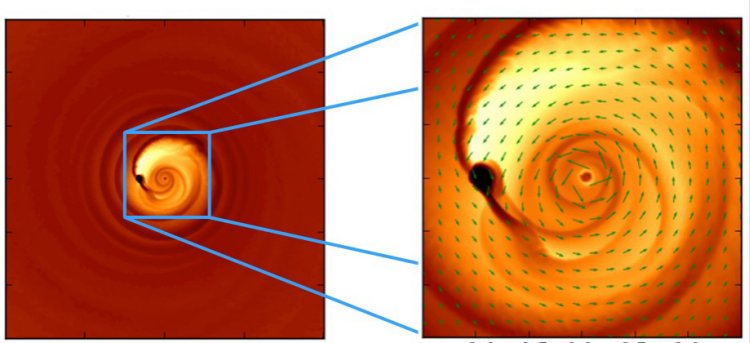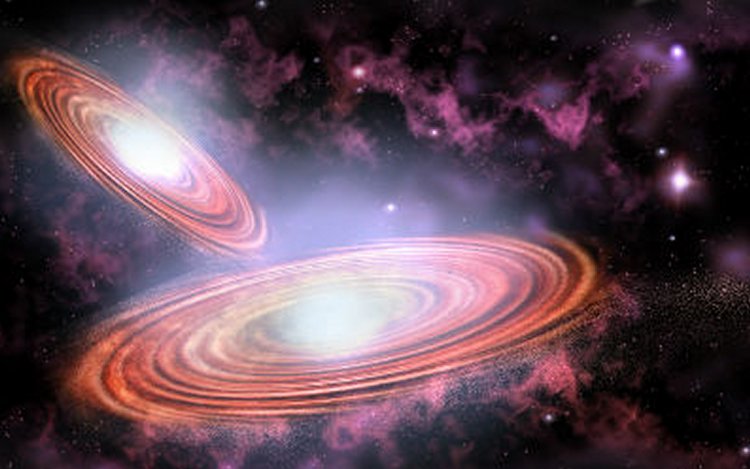MessageToEagle.com – A few years ago, observations from NASA’s Chandra X-ray Observatory suggested that the black hole collided and merged with another black hole and received a powerful recoil kick from gravitational wave radiation.
“It’s hard to believe that a supermassive black hole weighing millions of times the mass of the sun could be moved at all, let alone kicked out of a galaxy at enormous speed,” said Francesca Civano of the Harvard-Smithsonian Center for Astrophysics (CfA), who led the study.
Earlier this year, astronomers discovered what appeared to be a pair of supermassive black holes – named PG 1302-102 – circling toward a collision so powerful it would send a burst of gravitational waves surging through the fabric of space-time itself.

Now, researchers using data from NASA’s Galaxy Evolution Explorer (GALEX) and NASA’s Hubble Space Telescope have discovered that these two black holes are spinning extremely close around each other, being the ‘tightest orbiting celestial objects’ detected so far by astronomers.
Spiraling together 3.5 billion light-years away, deep in the Virgo constellation, the pair is separated by a mere light-week!
“This is the closest we’ve come to observing two black holes on their way to a massive collision,” said the study’s senior author, Zoltan Haiman, an astronomer at Columbia University.
By contrast, the closest previously confirmed black hole pair is separated by 20 light-years.

Based on calculations, researchers predict a tremendous smashup 100,000 years from now, an impossibly long time to humans but the blink of an eye to a star or black hole.
‘In the final moments before the ultimate union of two black holes, when they are tightly spinning around each other like ice skaters in a “death spiral,” they are predicted to send out ripples in space and time,’ NASA writes on its website.
And as Haiman said: “watching this process reach its culmination can tell us whether black holes and galaxies grow at the same rate, and ultimately test a fundamental property of space-time: its ability to carry vibrations called gravitational waves, produced in the last, most violent, stage of the merger.”
At the center of most giant galaxies, including our own Milky Way, lies a supermassive black hole so dense that not even light can escape. Over time, black holes grow bigger-millions to billions times more massive than the sun–by gobbling up stars, galaxies and even other black holes.
A supermassive black hole about to cannibalize its own can be detected by the mysterious flickering of a quasar-the beacon of light produced by black holes as they burn through gas and dust swirling around them.
The new study also offers a new technique for investigating other converging black holes, the researchers said. By estimating the combined and relative mass of PG 1302-102’s black holes, they narrow down the pair’s predicted crash time to between 20,000 and 350,000 years from now with a best estimate of 100,000 years
With more black holes to watch, the chance of witnessing a crash and the gravitational waves predicted, but not yet detected, by Einstein’s general theory of relativity, grows.
“The detection of gravitational waves lets us probe the secrets of gravity and test Einstein’s theory in the most extreme environment in our universe-black holes,” said the study’s lead author, Daniel D’Orazio, a graduate student at Columbia. “Getting there is a holy grail of our field.”
The study was published in this month’s edition of the journal, Nature.
MessageToEagle.com
sources: NASA Caltech






